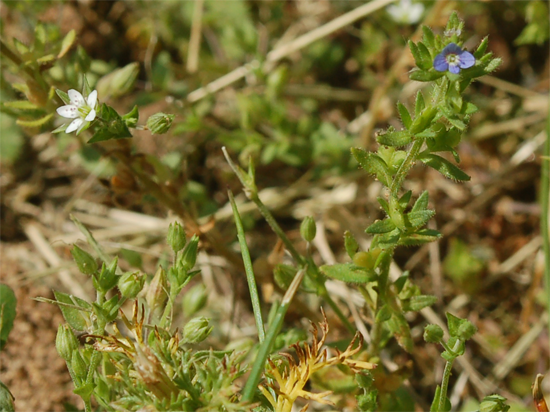When I spot yellow flowers in the distance, it usually turns out to be Mustard, so I was happy to find something different. This time it was Golden Alexanders.
 |
| Golden Alexanders |
Being indiscriminate about what I call a wildflower, I'm getting feedback from wildflower experts that it's important to distinguish the ones which are helpful to insects native to Michigan. Golden Alexanders is one of the "good" plants and is attractive to butterflies.
According to the
Ion Exchange Inc. website, the flowers are edible fresh and are delicious when cooked like broccoli, though you wouldn't want to eat the stalk. You can also make a tea out of the leaves. Native Americans made a poultice out of the root to treat wounds. Eating the root will make you sleepy.
Next I saw the Deadly Nightshade flower. DO NOT EAT, OR HANDLE IF YOU HAVE A CUT! These are poisonous! Other plant names include Dwale, Devil's Herb, Love Apple, Sorcerer's Cherry, Witches Berry, Divale, and Dwayberry.
 |
| Deadly Nightshade |
The roots are most poisonous, then the leave and flowers, and the berries the least so, although they taste sweet. For this reason they are dangerous to children, and there have been cases of children dying from eating these berries. Although the plant is toxic to cats and dogs, other animals such as horses, mules, rabbits, sheep, goats, pigs and birds can eat it without any bad effects.
The berries change from green to red to black as they ripen.
This plant has quite a history. If it doesn't kill you, it will definitely make you muddle-headed! Italian lades used to ingest small quantities of the juice to make their eyes dilate, since this was considered attractive. Sounds like they were muddle-headed to begin with.
The juice was used by Greeks during Baccahanals. It was also used during the Middle Ages as a sort of "truth serum" during torture sessions.
The plant induces sleep and, as related in the history of Scotland, the soldiers of Macbeth put the juice into the wine of the invading Danes during a "truce." This caused the Danes to sleep, allowing them to be easily dispatched. Note to fighting forces: don't eat something the enemy offers you!
It's said that "witches" used to drink the juice to experience the feeling of flying. Not something I want to try.
Botanical.com and
a webpage written by an Oxford scholar have additional interesting information about Deadly Nightshade.
As you might be able to tell, I saw quite a few wildflowers this day, because I was walking through a park called Scott Woods. It was nearing dusk and quite beautiful. Here's a scene I encountered near the end of the walk:
 |
| On the Riverwalk at dusk |













































